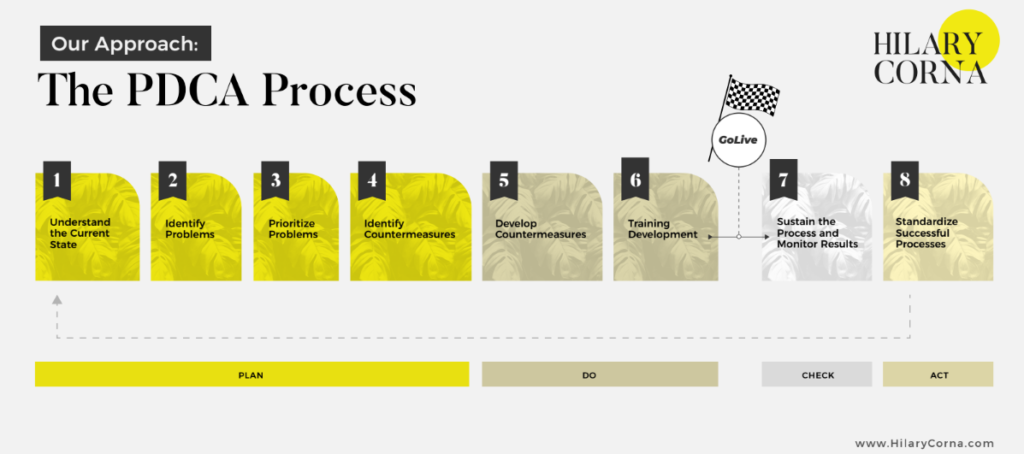As we approach the dawn of a new year, it’s a perfect time to reflect and envision positive changes for the future. For many businesses, this entails a critical examination of their operational processes.
The future of business success is in the hands of those who can master the art of process improvement. Having a strong and well-defined process can make or break your business. If you are looking to take your business to the next level, then 2024 is the year to fix your processes.
The Urgency of Process Improvement
Efficient and well-structured processes form the backbone of any successful business. They ensure smooth operations, enhance productivity, and contribute to overall organizational effectiveness. However, many companies find themselves entangled in outdated, convoluted, or inefficient processes that hinder growth and innovation.
The Importance of Process Improvement
Enhanced Efficiency
Outdated processes can lead to unnecessary delays, bottlenecks, and inefficiencies. By improving your processes, you pave the way for smoother workflows, reduced turnaround times, and increased overall efficiency. This, in turn, positively impacts the bottom line and customer satisfaction.
Cost Savings
Inefficient processes often come with hidden costs, whether it’s in the form of time wasted, resources mismanaged, or errors that necessitate corrections. By addressing and streamlining your processes, you can identify and eliminate unnecessary expenditures, leading to significant cost savings.
Staying Ahead of the Competition
Process improvement is a strategic tool that not only enhances internal efficiency but also plays a crucial role in keeping businesses ahead of the competition. A well-implemented process improvement strategy can become your unique selling proposition. This distinctiveness in operations or service delivery sets a business apart in the eyes of customers, creating a competitive advantage. Moreover, making continuous improvements in your processes keeps you ahead of the curve, becoming a leader that others look up to.
Employee Morale and Productivity
Cumbersome processes can demoralize employees and impede their productivity. On the other hand, streamlined workflows make tasks more manageable, fostering a positive work environment and boosting overall employee morale. Moreover, process improvement provides opportunities for all employees to share their ideas and witness them turn into action helping them feel more valued and making work more meaningful to them.
Steps to Fixing Your Processes

The PDCA (Plan-Do-Check-Act) cycle is a powerful process improvement tool with distinct advantages for service-based businesses. It ensures systematic, continuous, data-driven, and employee-engaged enhancements, with flexibility for specific needs.
Step 1: Plan
During this phase, organizations gain insights into their current situation, identify problems, and propose countermeasures. Setting realistic, measurable objectives and creating a detailed action plan are vital to aligning improvement efforts with organizational goals.
Step 2: Do
After planning, it’s time for action. This phase involves implementing changes, communicating with stakeholders, and gathering feedback to ensure effectiveness. Training development is crucial, empowering teams to execute the action plan and fostering a culture of experimentation. Practical experiences during this phase provide valuable insights and help identify gaps in understanding.
Step 3: Check
Once changes are implemented, evaluation is essential. The “Check” phase involves sustaining and monitoring results and collecting and analyzing data against established objectives. This step reveals areas for improvement, potential bottlenecks, or unexpected challenges. Seeking feedback from stakeholders, including customers and employees, enhances the understanding of changes’ effectiveness, providing insights for optimization.
Step 4: Act
Informed by the “Check” phase, the “Act” phase involves making decisions. Successful improvements are standardized and integrated into regular workflows. Lessons learned are documented for future enhancements. If objectives aren’t met, adjustments and refinements are made to the plan, enabling organizations to refine their approach and continue the cycle of improvement.
Embrace Process Improvement: Your Competitive Edge in 2024
Making 2024 the year you finally fix your processes is not just a resolution but a strategic imperative. Don’t wait for chaos to strike—lead the industry by proactively refining your processes.
You can do this by using the PDCA process. This approach empowers your organization to continuously review, refine, and optimize your processes. By fostering employee engagement, promoting flexibility, and catalyzing positive change, PDCA enhances agility, fosters continuous learning, and fuels growth, enabling organizations to stay ahead of the competition.
Want to learn more about how you can fix your processes using the PDCA process?
Visit www.hilarycorna.com.
In your service,
Hilary Corna














